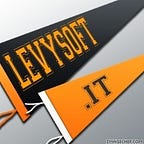Artificial Intelligence and Healthcare: An Unexpected Alliance
English translation of an italian post that was originally published on Levysoft.it
Since LLMs (Large Language Models) moved out of research centers, their ability to understand and generate coherent text has been frequently utilized to automate and enhance various aspects of programming, almost as though it were their sole area of application (although recently, music and videos have also begun to be transformed by these models).
However, the healthcare sector seemed to have remained untouched by the influence of LLMs until now. We are now witnessing a growing integration of these models in this field as well, where they are beginning to revolutionize patient data analysis, treatment personalization, and diagnostic support. For instance, LLMs can analyze huge volumes of clinical data to identify patterns and predict health outcomes, aiding doctors in therapeutic decisions.
Nevertheless, for this to work effectively, it is crucial to drastically reduce the so-called ‘hallucinations’, or the generation of inaccurate or entirely fabricated information. This is because the accuracy and truthfulness of information are critical for patient health and safety. For this reason, researchers are developing more sophisticated model training and validation techniques. An example is Google’s launch of Med-Gemini, a suite of advanced AI models optimized for the healthcare sector, which has achieved an accuracy of 91.1% in some benchmarks.
Deterministic Quotating
On another front, Invetech is working to approach the problem through Deterministic Quoting, a new technique that ensures quotations from the source material are reported verbatim, thereby eliminating hallucinations.
In practice, instead of improving LLMs, which remain inherently imperfect, ‘real’ quotes are provided deterministically and displayed on a differently colored background. Since hallucinations are endemic in LLM systems (such that all models, whether from OpenAI, Google, or Anthropic, exhibit a 20% rate of hallucinations), there is a tendency to train LLMs to cite sources by attaching relevant original material using RAG (Retrieval-Augmented Generation). This approach has significantly reduced the ‘trust gap’ associated with LLMs by providing literal ‘ground truth’ information interspersed with LLM commentary, contributing to greater user confidence in the accuracy of the information provided.
A simple visual approach, which involves displaying on a blue background, ensures that the data are free from hallucinations because they have never been processed through an LLM (or any other non-deterministic artificial intelligence model), while the surrounding text (on a white background) comes directly from an LLM and therefore might still contain hallucinations. The only task of the AI, then, is to choose which section of the source material to cite, but the retrieval of that text is done through traditional database searching. Consequently, the only way to ensure that an LLM has not altered the text is, in practice, not to send it through any LLM at all!
